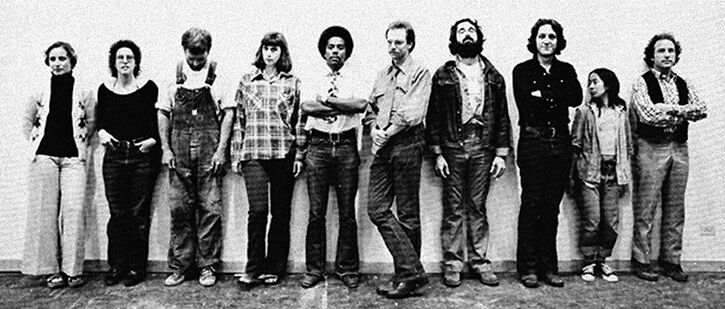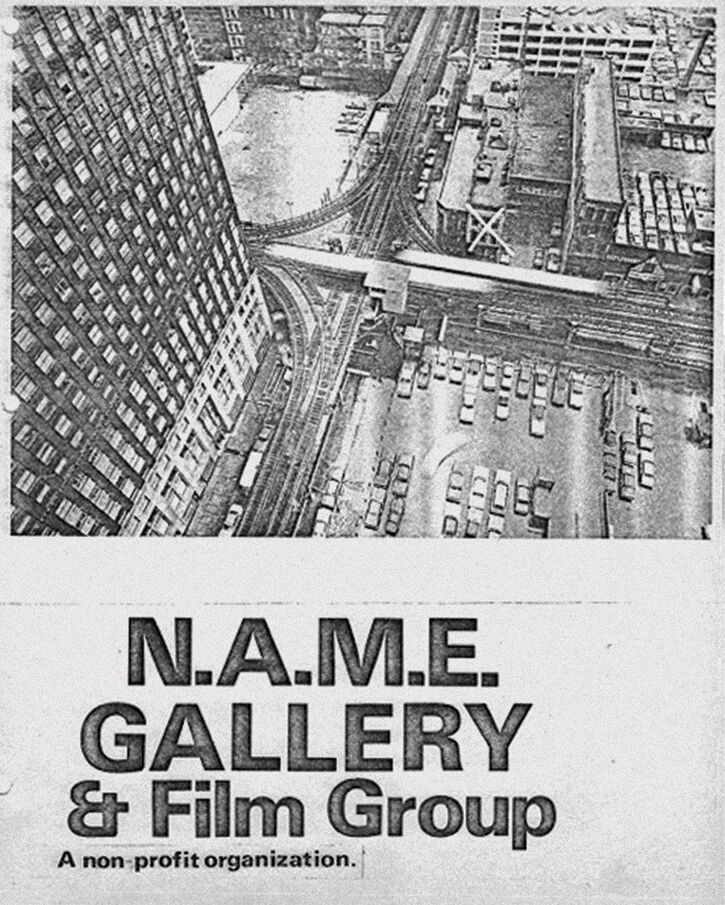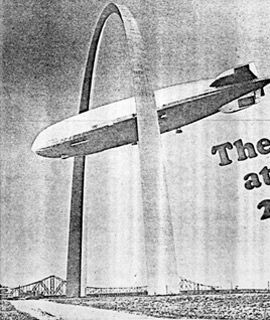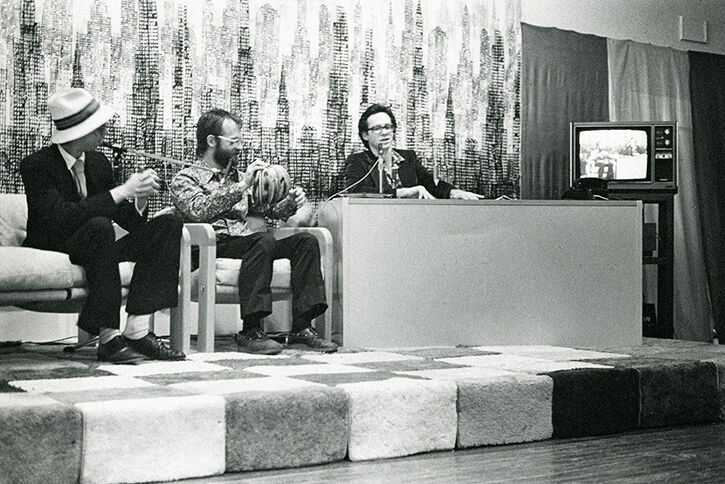
Artist-run Archive

by Bridget Esangga
It was 1973, and the Chicago art scene was awash with the Hairy Who and traditional artists. A group of recent SAIC graduates, believing their work would never be shown in conventional art galleries, decided to shake things up by creating their own space—one that would show experimental work and provide a platform for the "genuine oddballs and visionaries" of their generation.
"With that early-20s enthusiasm and no concept of reality, seven or eight of us just started meeting," says alum Barry Holden (BFA 1973, MFA 1975). "It worked because there was a true reason to meet, and we kept doing it."
The group organized as a nonprofit, and Holden asked his father, an advertising copywriter, to draft the gallery's mission statement. The gallery did not yet have a name, so Holden's father left the letters NAME where the name should have been. In an egalitarian gesture, the founders simply added periods after each letter, and N.A.M.E. Gallery was born.

The original space was located at the corner of Lake and Wells, on the third floor—the same level as the L tracks. Rent was $50 per month. The members renovated the space themselves, and Holden recalls asking companies for donations of paint and construction materials, which surprisingly, were given.
N.A.M.E.'s early exhibitions drew crowds that numbered into the hundreds and included a mixture of performance, installation, film, and music. One show included live birds and animals. Another time, two artists flooded the entire floor and created an island in the gallery with stepping-stones for a path around the exhibition. Artist Dennis Kowalski's solo show incorporated ordinary home construction materials as a comment on the perception of the "white box's" control over how viewers receive art. And one major group show, the Amatory Show, gave a nod to the pornography store located downstairs from the gallery.

This gallery's cutting-edge, interdisciplinary focus can be largely attributed to SAIC. N.A.M.E.'s founding members were all alumni as were many of the hundreds of artists who showed work there over the years. Holden particularly remembers Emilio Cruz, a Painting and Drawing instructor who encouraged his students to expand their practice. "There was great teaching at SAIC. There was interdisciplinarity; it was a great awakening of people," he says.
Though the 70s were a time when the alternative art scene was blossoming in Chicago, N.A.M.E. was a pioneer and a leader in Chicago and the nation in the artist-run space movement. When the gallery moved to 9 West Hubbard by 1978 it started the art scene in that neighborhood and quickly became the epicenter of Chicago’s most progressive arts community.
"It published catalogs and books written by artists which were designed to take control over the artworks' meaning for a new generation who were suspicious of the hierarchical and exclusionary commercial art marketing system," says Paul Krainak who was elected as a member in 1978 and became Director in 1980.

As time passed, directors of N.A.M.E. Gallery passed the torch to new directors and moved on. The gallery ran for more than 20 years. Remarkably, little has been written or documented about the groundbreaking work shown there.
Holden moved to New York and built a successful career as an architect and artist, but always considered N.A.M.E. Gallery as one of his greatest accomplishments. Krainak is an artist and critic who has published for numerous art journals and academic presses on contemporary art and is currently the Chair of the Department of Art and Director of the Inland Visual Studies Center at Bradley University. He credits the gallery with building his awareness of art as a discipline and social practice and forcing him to play many different roles: curator, director, grant writer, and administrator.
Looking back this year, Holden, Krainak, and a group of their peers decided to mark the 40th anniversary of the gallery's opening by documenting its history for the new age—on the Internet. The group is trying to create a timeline of the gallery and specifically seeks input from artists and gallery directors who were involved with N.A.M.E. in the 80s and beyond.
"I realized there were very few people who had a thread all the way through this thing," says Holden. "It was a living place. It influenced tons of artists. I started thinking 'I don't want this to be lost.'"
If you exhibited or performed at N.A.M.E. Gallery at any time during its 20-year run, please contact namegallery40@gmail.com with your information and insight. For more news and information about the archive, artists, and events, join the gallery's Facebook group.
